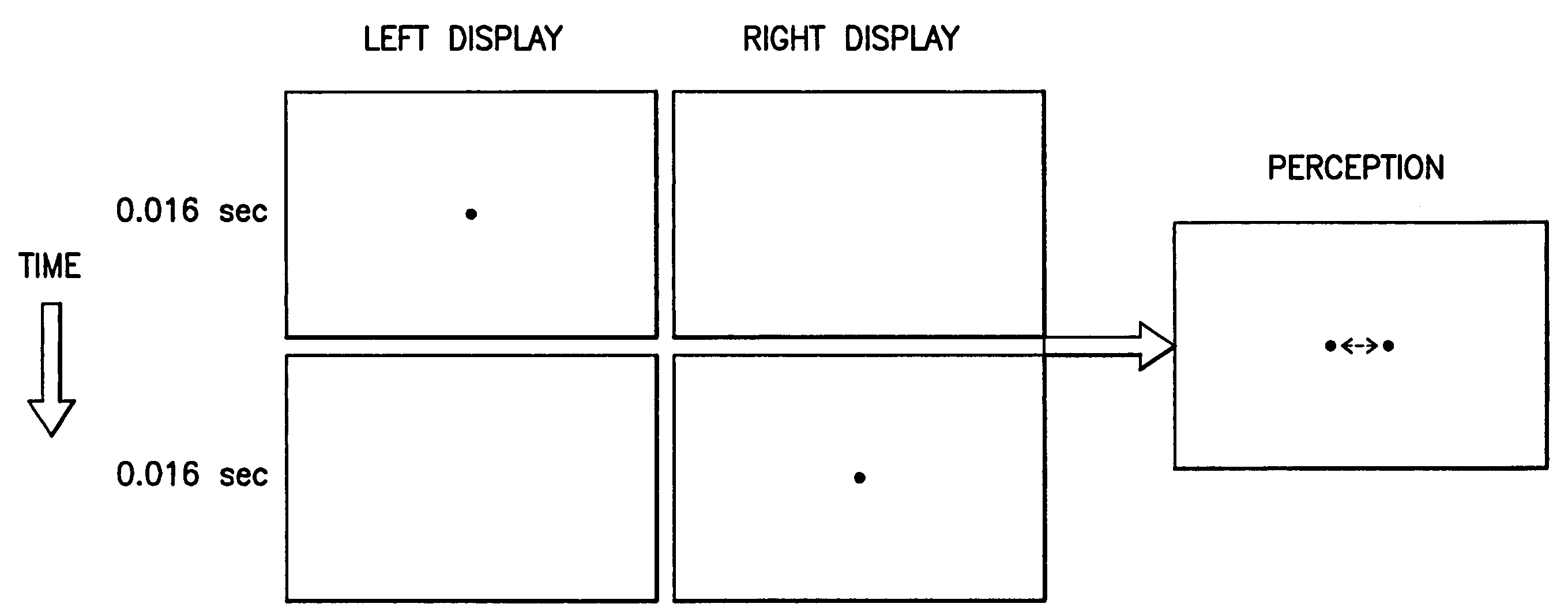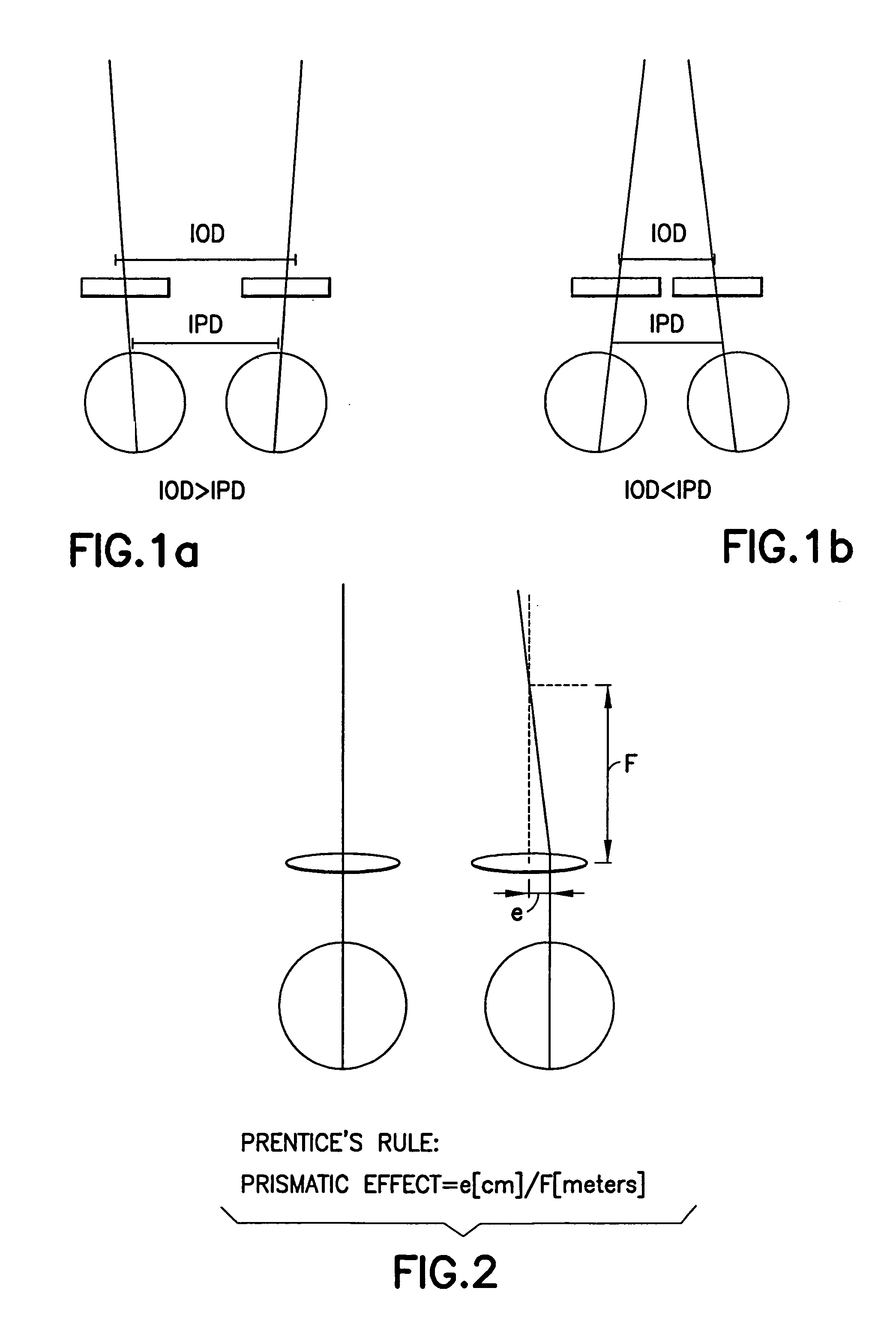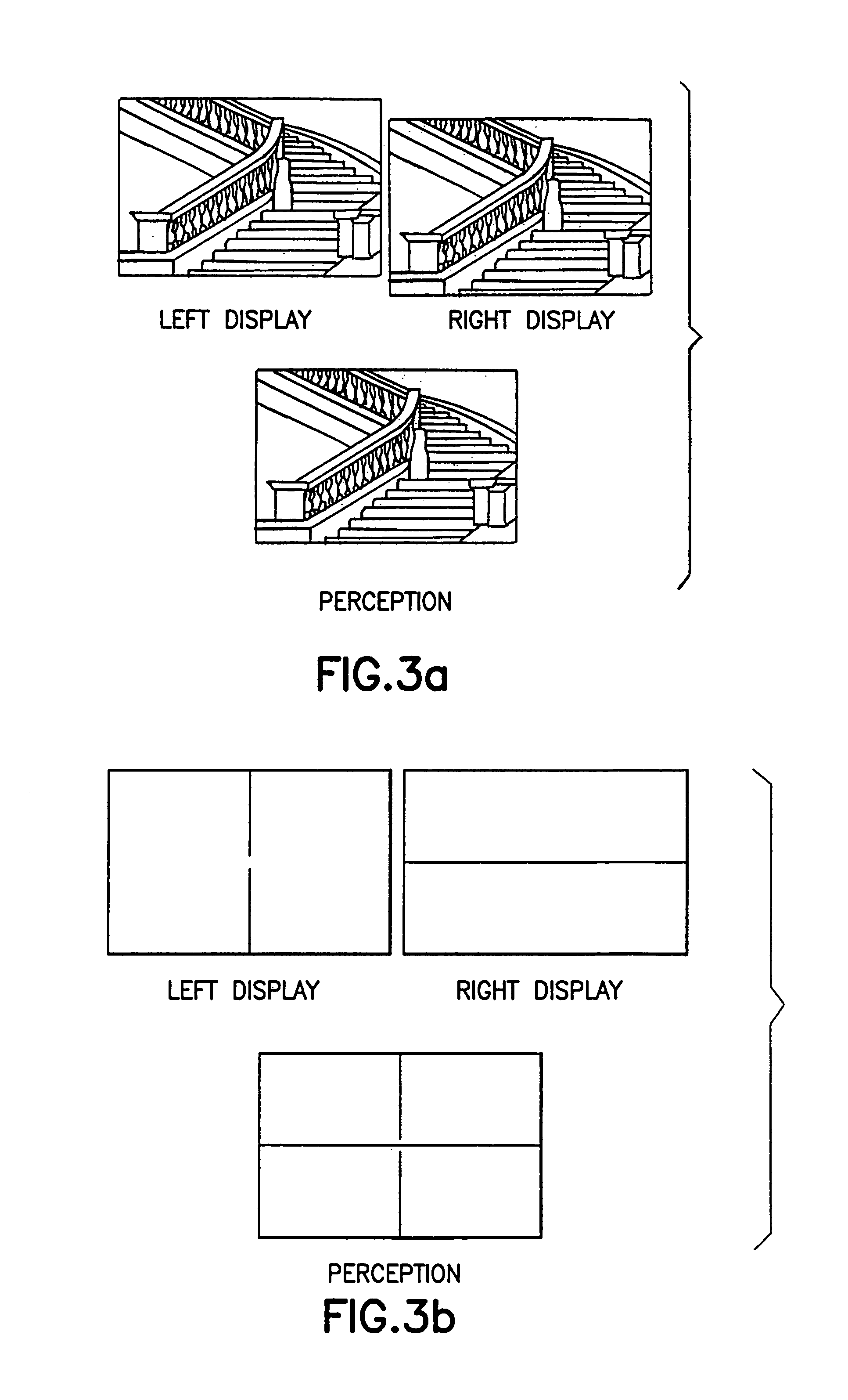Method to detect misalignment and distortion in near-eye displays
a near-eye display and misalignment technology, applied in the field of binocular devices, can solve the problems of eye strain or other severe symptoms, the hmd does not fit well, and the binocular instruments have slight differences between the two images, so as to reduce the adverse effects of symptoms
- Summary
- Abstract
- Description
- Claims
- Application Information
AI Technical Summary
Benefits of technology
Problems solved by technology
Method used
Image
Examples
Embodiment Construction
[0030]The invention is based on three processes of the visual system.
[0031]1. Apparent movement means that if two dots are alternately flashed in a sufficient frequency and from some distance apart, there appears an illusion of movement between these two dots. For example television and movies are based on this illusion: although the broadcast or show consists of separate static frames, they are perceived as a smooth movement because they are shown fast enough sequence.
[0032]2. Interocular apparent movement means that you can show the dots or frames alternately to left and right eye and still see the illusion of movement.
[0033]3. Stereoscopic fusion means that the visual system has to fuse the images relayed from left and right eye to form a single three-dimensional perception of world that we usually experience. The fusion is possible even if the images are highly artificial, as in a HMD. Although the fusion is achieved in the case of the HMD, the eye muscles have to work hard to m...
PUM
 Login to View More
Login to View More Abstract
Description
Claims
Application Information
 Login to View More
Login to View More - R&D
- Intellectual Property
- Life Sciences
- Materials
- Tech Scout
- Unparalleled Data Quality
- Higher Quality Content
- 60% Fewer Hallucinations
Browse by: Latest US Patents, China's latest patents, Technical Efficacy Thesaurus, Application Domain, Technology Topic, Popular Technical Reports.
© 2025 PatSnap. All rights reserved.Legal|Privacy policy|Modern Slavery Act Transparency Statement|Sitemap|About US| Contact US: help@patsnap.com



